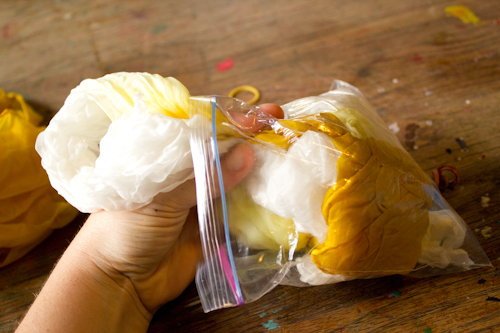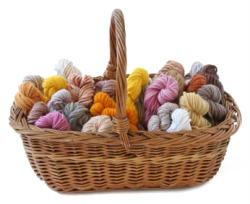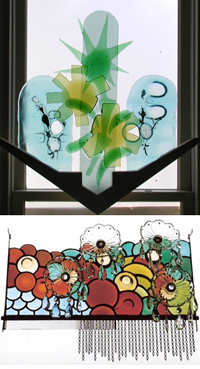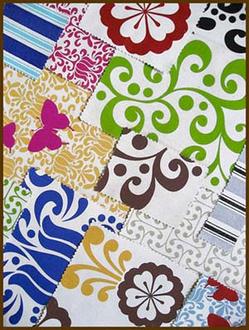It can be tricky to think of ways to paint or dye silk fabric, if you’ve mostly worked with cotton, linen, or other plant-fiber fabrics before. You probably already know that silk takes dye differently, but how differently? Can you paint it? Transfer images to it? Dye it multiple colors?
Fortunately, silk fabric is very easy to work with, and in some ways easier to paint and dye than cotton is. It’s also well worth playing around with, if you’re comfortable using a protein-based fabric. Silk is a strong natural fiber, with excellent drape and luster. It takes dyes beautifully, and is especially suited to a variety of natural dyes, inks, and other materials. If you enjoy playing with color and fiber, you’re likely to really enjoy experimenting with silk!
Below, I’ve linked to some of my favorite tutorials for altering silk fabrics or embellishing them with dyes and paints to get beautiful and interesting results. Check out all the tips and tricks on offer here, and get inspired to make your own unique creations!
Methods for Silk Dyeing
Dye is an efficient way to color large swaths of fabric at once. Your results can be abstract or purposeful, and your dyes can be store-bought or naturally produced.
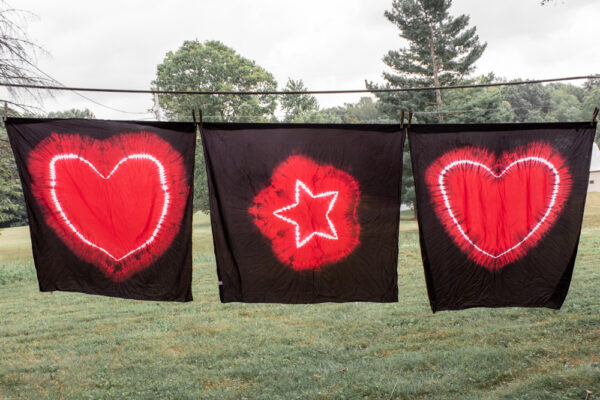
- Tie-dye. If you love to play with cotton dye and paint, this is a great starter project to introduce you to the possibilities of silk. Take the same techniques used with cotton and apply them, with some alterations, to silk fabric. The process is a little different but the results, in my opinion, are even more vibrant!
- Vat Dye. Use this standard process to dye silk on your stovetop. You can give your silk a base coat that will be further altered, or simply change its color, full stop. With a little finagling, you can even vat-dye multiple colors!
- Ombre Dye. Here’s a way to add interest to a single-color dye. Use it for a single piece, or combine the technique with multiple colors, as in the tutorial. This is a great technique for large pieces, or even finished sewn items, like dresses.
- Dyeing for Craft Use. If you don’t need your silk fabric to stand up to washing, then there are so many more methods open to you! Here’s an example of how to dye ribbon that’s meant for scrapbooking. Just consider the acid content of the dye you want to use, as acidic substances are not archival.
- Arashi Shibori. This is a very specific method that gives a very distinctive result! If you discover that you enjoy playing around with shibori, look for a local class to up your game as well as give you more cultural and historical context for the techniques.
- Avocado Dye. I LOVE experimenting with natural materials as dyes. Here’s a tutorial for dyeing silk with avocados: you’ll never guess what color it makes! If you enjoy process-oriented activities, it’s fun to play with vat dyeing using all kinds of natural materials. Pro tip: go for something with lots of tannins for a guaranteed effect!
- Marble Dyeing. Substitute an oven for the stovetop and experiment with this multi-color dyeing method. I prefer this method over vat-dyeing when a want a piece with more variable and non-linear color transitions.
- Kool-Aid Silk Dye. It’s one of those things that’s so strange you can’t believe it works, but yes, you can dye silk with Kool-Aid! This is a particularly kid-friendly project and a great way to set a small kid up with play silks.
- Bundle Dyeing with Flowers. Here’s a method that highlights the natural beauty of silk via an equally natural method. Bundle dyeing silk using flowers and greenery gives your fabric an interesting abstract pattern, and silk takes natural dyes just as well as it takes Kool-Aid!
- Printing with Leaves. Eco-printing is similar to bundle dyeing, above, but the process allows for both abstract areas and areas where you can see a direct image of the printed leaf.
Methods for Silk Painting
Painting covers a smaller area at one time, so these methods mean more work if you want to finish an entire large piece. The more intentional process gives you more control over your results, however, including the ability to create intricate and detailed embellishments.
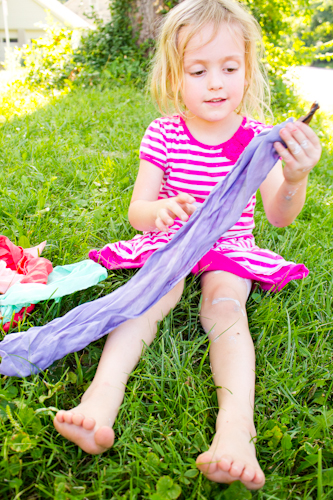
- Painting with an Abstract Method. This technique is very similar to wet-on-wet watercolor, and the look is similar, too! I love the advice to sprinkle salt on the wet silk to give variety to the color transfer.
- Resist Painting. Use a store-bought resist that’s formulated for silk to add intricate details to your dyeing and painting processes. This is the best technique to use to paint something realistic.
- Wet-on-Dry Painting. Apply fabric paint to dry silk to get bolder, firmer lines with less bleed than with the wet-on-wet technique. Combine this technique with a wet-on-wet or vat-dyed base coat of dye to add more depth to your finished product.
- Sharpies and Alcohol. You might have seen this technique done before with markers, water, and coffee filters as a fun children’s craft. This adult version uses Sharpies and rubbing alcohol on a silk scarf, and it’s still fun!
Do you have a method that you love to use to dye silk, wool, or other protein-fiber fabrics? Tell me about it in the Comments below!

